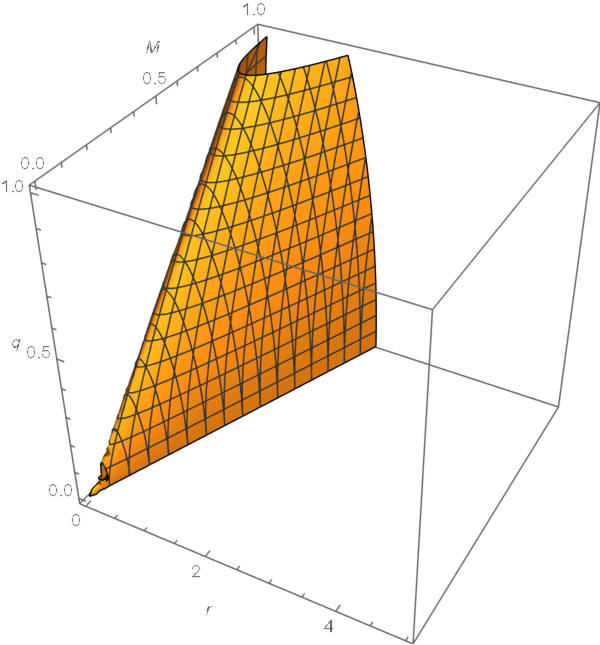There are four separate equations that I need to solve individually for r.
Equation 1
1 - $\frac{8 M e^{-\sqrt{\frac{2 q^2}{M r}}}}{r \bigg(1 + e^{-\sqrt{\frac{2 q^2}{M r}}}\bigg)^2}$ = 0
Equation 2
1 - $\frac{4 M}{r} \frac{1}{\bigg(e^{\sqrt{\frac{ q^2}{M r}}} + e^{-\sqrt{\frac{ q^2}{M r}}} \bigg)}$ = 0
Equation 3
1 - $\frac{2 q^2}{r^2\bigg(-1+e^{\frac{q^2}{M r}}\bigg)}$=0
Equation 4
1 - $\frac{12 q^2 e^{\frac{6 q^2}{M r}}}{r^2 \bigg(-1 + e^{\frac{6 q^2}{M r}}\bigg)^2}$=0
M is mass, so M is positive real number. q is charge, q can be negative. Both M and q will be real numbers.
I tried using solve command in Mathematica. For ex, for solving equation 1, My input is
Solve[1 - (8 M Exp[-Sqrt[(2 q^2)/(M r)]])/(
r (1 + Exp[-Sqrt[(2 q^2)/(M r)]])^2) == 0, r]
Mathematica is unable to solve this. It is showing message,
Solve::nsmet: This system cannot be solved with the methods available to Solve.
The same is the case with other equations.
I tried other commands also, like, Reduce, NSolve, SolveValues etc, but for these also it is showing same message,for all these equations.
Can anyone suggest any way of solving these equations. It will be very helpful if at least one of these equations get solved.
Thanks in advance!

